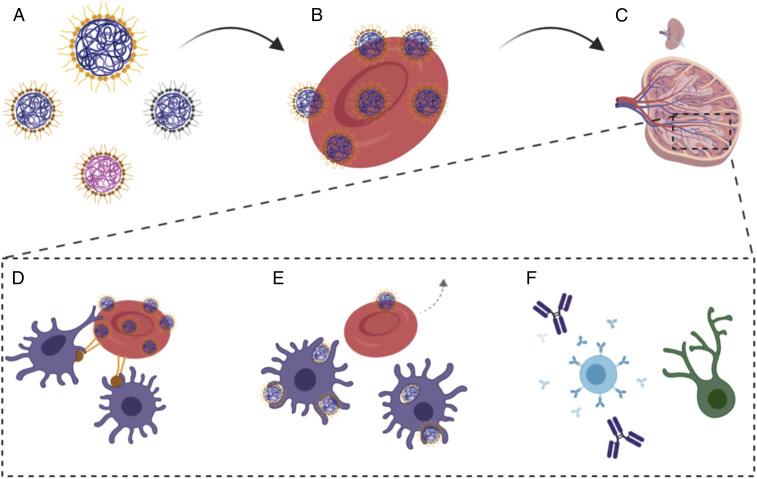Fig. 1.
Schematic for engineering a handoff of nanoparticles at the spleen via erythrocyte hitchhiking. (A) Protein-capped polymeric nanoparticles used for the study (different sizes, materials, or coated with different proteins). (B) The number of nanoparticles loaded on erythrocytes was tuned for protein loading and to induce temporary up-regulation of phosphatidylcholine. (C) Intravenous injection of hitchhiked nanoparticles leads to high discharge in the spleen. (D) Up-regulated phosphatidylcholine and masking CD47 improves interactions with antigen-presenting cells in the spleen. (E) Improved erythrocyte interactions facilitate nanoparticle uptake by the APCs while the erythrocytes return back to the circulation. (F) Handoff of nanoparticles at the spleen improves both humoral and cellular immune responses.

